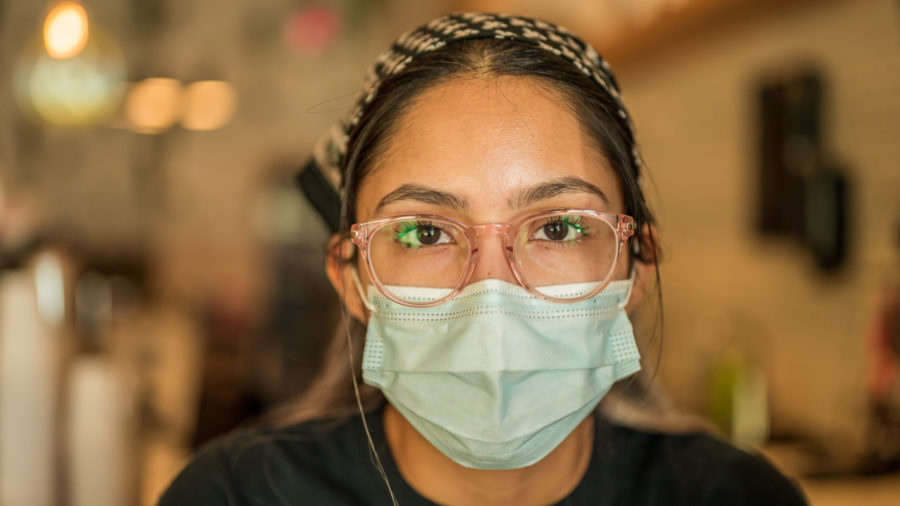
This is one in a series of stories that examines how the COVID-19 pandemic has impacted systemic issues through the Fault Lines of race, class, gender, generation, geography and sexual orientation.
The coronavirus has affected populations around the world, but Black and Latinx communities in the United States are experiencing more cases and deaths, and fewer recoveries than affluent, white communities.
Failures in testing and tracking along with loose health precautions and a delayed national response to the pandemic have exposed issues that affect marginalized communities: racial disparities and disparities in resources.

The U.S. coronavirus outbreak forced many states to issue stay-at-home orders this spring. Cases have spiked since the orders were lifted. In response, many businesses and local governments have made wearing protective masks mandatory. (Photo by Cristian ArguetaSoto.)
In a 2018 study the Economic Policy Institute found that about 16% of non-Black Latinx workers and 20% of Black workers could complete their jobs or part of their jobs from home, while non-Latinx white workers’ average for telework was 30%.
The number of workers of each racial and ethnic background who telework, or can work from home, is a good indicator of which communities would be more affected by the pandemic both financially and in terms of their and their families’ health.
Service jobs including transportation and utilities are held in higher numbers by Black men, while hard-labor industries such as construction and maintenance are held in higher numbers by non-Black Latinx individuals. Twenty-one percent of the construction industry’s labor force was non-Black Latinx, while 14% was white, according to a study conducted by the United States Bureau of Labor Statistics.
Read more: Civil rights protesters gather by the thousands despite an active pandemic
Since most Black and non-Black Latinx workers can’t telework, they may have to choose between exposing themselves to health hazards or leaving the workforce and putting their families in financial despair.
Other factors such as environmental segregation and the lack of health insurance contribute to higher case numbers and higher hospitalizations among the two racial and ethnic communities.
“Compared to non-Hispanic (Latinx) whites, Hispanics (Latinx individuals) are almost 3 times as likely to be uninsured, and non-Hispanic blacks are almost twice as likely to be uninsured,” according to the Centers for Disease Control and Prevention (CDC). “People may not receive care because of distrust of the healthcare system, language barriers, or cost of missing work.”
According to the Texas Health and Human Services’ data, 26% of confirmed coronavirus cases were white, 36% were non-Black Latinx, and 12% were Black, yet 26% of the deaths were non-Black Latinx people, while Black people made up 12% of fatalities.
!function(){“use strict”;window.addEventListener(“message”,(function(e){if(void 0!==e.data[“datawrapper-height”]){var t=document.querySelectorAll(“iframe”);for(var a in e.data[“datawrapper-height”])for(var r=0;r